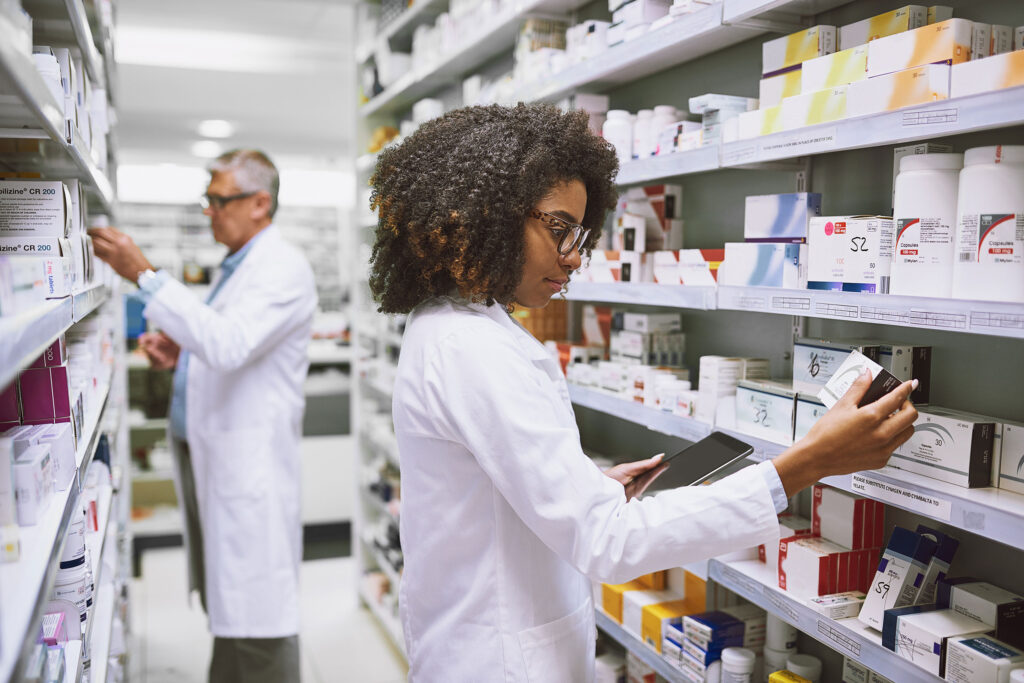Editor’s note: This blog was published by The Conversation on July 20, 2023.
Past public ire over high drug prices has recently taken a back seat to a more insidious problem – no drugs at any price.
Patients and their providers increasingly face limited or nonexistent supplies of drugs, many of which treat essential conditions such as cancer, heart disease and bacterial infections. The American Society of Health System Pharmacists now lists over 300 active shortages, primarily of decades-old generic drugs no longer protected by patents.
While this is not a new problem, the number of drugs in short supply has increased in recent years, and the average shortage is lasting longer, with more than 15 critical drug products in short supply for over a decade. Current shortages include widely known drugs such as the antibiotic amoxicillin; the heart medicine digoxin; the anesthetic lidocaine; and the medicine albuterol, which is critical for treating asthma and other diseases affecting the lungs and airways.
What’s going on?
I’m a health economist who has studied the pharmaceutical industry for the past 15 years. I believe the drug shortage problem illustrates a major shortcoming of capitalism. While costly brand-name drugs often yield high profits to manufacturers, there’s relatively little money to be made in supplying the market with low-cost generics, no matter how vital they may be to patients’ health.
A generic problem
The problem boils down to the nature of the pharmaceutical industry and how differently the markets for brand and generic drugs operate. Perhaps the clearest indication of this is the fact that prices of brand drugs in the U.S. are among the highest in the developed world, while generic drug prices are among the lowest.
When a drugmaker develops a new pill, cream or solution, the government grants the company an exclusive patent for up to 20 years, although most patents are filed before clinical testing, and thus the effective patent life is closer to eight to 12 years. Nonetheless, patents allow the drugmakers to cover the cost of research and development and earn a profit without the threat of competition from a rival making an identical product.
But once the patent expires, the drug becomes generic and any company is allowed to manufacture it. Since generic manufacturers are essentially producing the same product, profits are determined by their ability to manufacture the drug at the lowest marginal cost. This often results in low profit margins and can lead to cost-cutting measures that can compromise quality and threaten supply.
Outsourced production creates more supply risks
One of the consequences of generics’ meager margins is that drug companies outsource production to lower-cost countries.
As of mid-2019, 72% of the manufacturing facilities making active ingredients for drugs sold in the U.S. were located overseas, with India and China alone making up nearly half of that.
While overseas manufacturers often enjoy significant cost advantages over U.S. facilities, such as easy access to raw materials and lower labor costs, outsourcing production at such a scale raises a slew of issues that can hurt the supply. Foreign factories are more difficult for the Food and Drug Administration to inspect, tend to have more production problems and are far more likely than domestic factories to be shut down once a problem is discovered.
In testimony to a House subcommittee, Janet Woodcock, the FDA’s principal deputy commissioner, acknowledged that the agency has little information on which Chinese facilities are producing raw ingredients, how much they are producing, or where the ingredients they are producing are being distributed worldwide.
The COVID-19 pandemic underscored the country’s reliance on foreign suppliers – and the risks this poses to U.S. consumers.
India is the world’s largest producer of generic drugs but imports 70% of its raw materials from China. About one-third of factories in China shut down during the pandemic. To ensure domestic supplies, the Indian government restricted the export of medications, disrupting the global supply chain. This led to shortages of drugs to treat COVID-19, such as for respiratory failure and sedation, as well as for a wide range of other conditions, like drugs to treat chemotherapy, heart disease and bacterial infections.
Low profits hurt quality
Manufacturing drugs to consistently high quality standards requires constant testing and evaluation.
A company that sells a new, expensive, branded drug has a strong profit motive to keep quality and production high. That’s often not the case for generic drug manufacturers, and this can result in shortages.
In 2008, an adulterated version of the blood-thinning drug Heparin was recalled worldwide after being linked to 350 adverse events and 150 deaths in the U.S. alone.
In 2013, the Department of Justice fined the U.S. subsidiary of Ranbaxy Laboratories, India’s largest generic drug manufacturer, US$500 million after it pleaded guilty to civil and criminal charges related to drug safety and falsifying safety data. In response, the FDA banned products made at four of the company’s manufacturing facilities in India from entering the U.S., including generic versions of gabapentin, which treats epilepsy and nerve pain, and the antibiotic ciprofloxacin.
And while there may be multiple companies selling the same generic drug in the U.S., there may be only a single manufacturer supplying the basic ingredients. Thus, any hiccup in production or shutdown due to quality issues can affect the entire market.
A recent analysis found that approximately 40% of generic drugs sold in the U.S. have just one manufacturer, and the share of markets supplied by just one or two manufacturers has increased over time.
Repatriating the drug supply
It is hard to quantify the impact of drug shortages on population health. However, a recent survey of U.S. hospitals, pharmacists and other health care providers found that drug shortages led to increased medication errors, delayed administration of lifesaving therapies, inferior outcomes and patient deaths.
What can be done?
One option is to simply find ways to produce more generic drugs in the U.S.
California passed a law in 2020 to do just that by allowing the state to contract with domestic manufactures to produce its own generic prescription drugs. In March 2023, California selected a Utah company to begin producing low-cost insulin for California patients.
Whether this approach is feasible on a broader scale is uncertain, but, in my view, it’s a good first attempt to repatriate America’s drug supply.
Sign up for Schaeffer Center news
Related Work
-
Data Visualization
Impact of Oncology Drug Shortages on Chemotherapy Treatment

